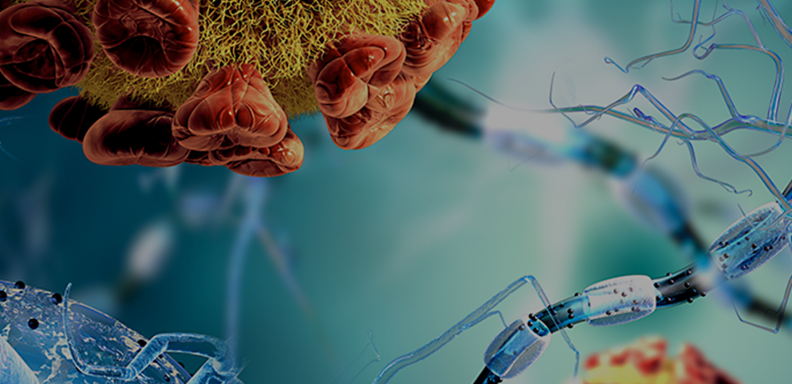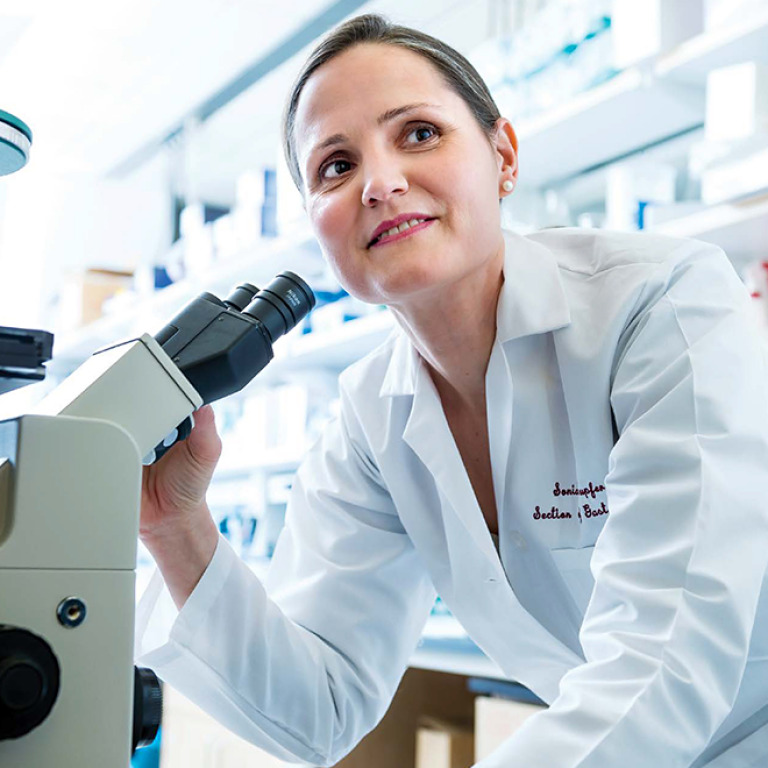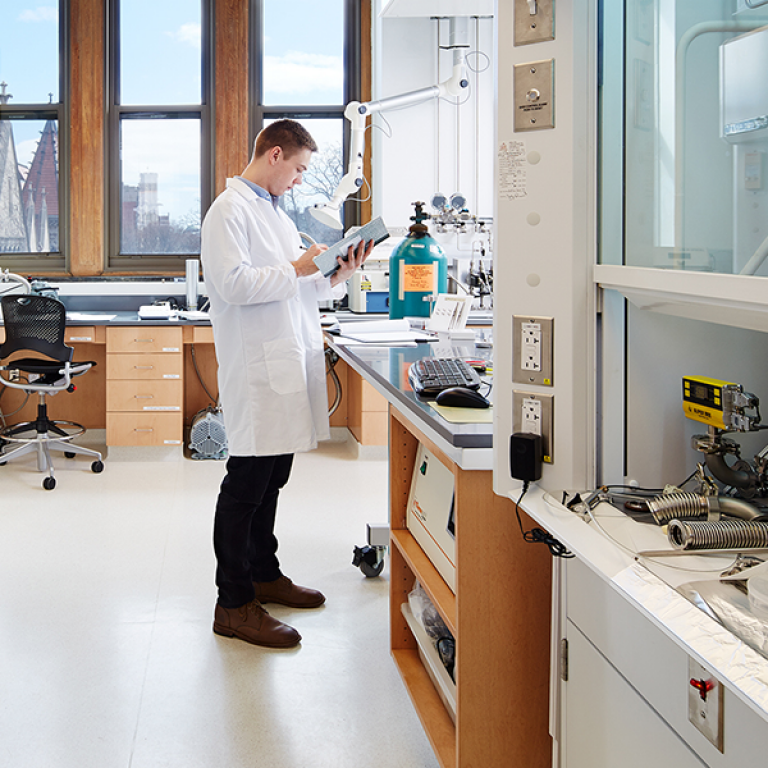Bacteria evolve rapidly in the human gut by sharing genetic elements with each other. Bacteriodales is a prolific order of gut bacteria that trade hundreds of genetic elements. Little is known, however, about the effects of these DNA transfers, either to the fitness of the bacteria or the host.
New research from the University of Chicago shows that a large, ubiquitous mobile genetic element changes the antagonistic weaponry of Bacteroides fragilis, a common bacterium of the human gut. Acquisition of this element shuts down a potent weapon of B. fragilis, yet arms it with a new weapon to which the strain that donated the DNA is protected. These weapons help the bacteria carve out niches in the tightly packed recesses of the gut.
Laurie Comstock, PhD, Professor of Microbiology and member of the Duchossois Family Institute at UChicago, and senior author of the new study, has been studying different antagonistic mechanisms of Bacteroidales and the way they transfer DNA for more than 10 years. “These organisms evolve rapidly by DNA transfers. It’s quite amazing,” she said. “We knew that some strains of B. fragilis couldn’t fire their weapons, but when we saw it was due to the acquisition of a large mobile genetic element, that’s when we knew we found something interesting.”

Laurie Comstock, PhD
Professor of Microbiology
Committee on Microbiology
Committee on Molecular Metabolism and Nutrition
The study, “A ubiquitous mobile genetic element changes the antagonistic weaponry of a human gut symbiont,” was published October 24 in Science.
A spring-loaded, poison-tipped spear
Many Bacteroidales species can kill neighboring bacteria by producing toxins. Some of these toxins simply diffuse from the bacterial cell into the surrounding environment, killing nearby sensitive strains. Another weapon is the type VI secretion system (T6SS), which is a nanomachine containing a pointed, spring-loaded tube loaded with toxins. When it fires, it injects toxins directly into neighboring cells like a poison-tipped spear.
The Bacteroidales T6SS comes in three different types, or genetic architectures. One, genetic architecture 3 (GA3), is exclusive to B. fragilis and is very effective at killing other Bacteroidales species. The other two types, GA1 and GA2, are encoded by genes contained on large mobile genetic elements called integrative and conjugative elements (ICEs). These GA1 and GA2 ICEs are rapidly transferring between Bacteroidales species in the human gut throughout the world. However, scientists have yet to observe the same, lethal potency in GA1 and GA2 T6SSs as they have for the GA3 T6SS.
“The ICE containing the GA1 T6SS ICE is racing through human populations, and rapidly transferring to numerous Bacteroidales species in a person’s gut,” Comstock said.
Comstock’s team started studying natural B. fragilis isolates that had a GA3 T6SS or had both a GA3 and GA1 ICE. Those with both ICEs no longer fired the GA3 weapon and could no longer kill other Bacteriodales species. To show this was due to the addition of the GA1 ICE to these strains, they transferred the GA1 ICE into B. fragilis strains with only the GA3 T6SS and showed that the resulting new strains, or “transconjugants,” were similarly unable to antagonize other strains with their GA3 T6SS.
The researchers then deleted portions of the GA1 ICE to see which region of the 116 kilobase ICE was shutting off the GA3 weapon. They found that a portion of the GA1 T6SS region encoding the membrane complex of the GA1 nanomachine prevented GA3 T6SS firing.



